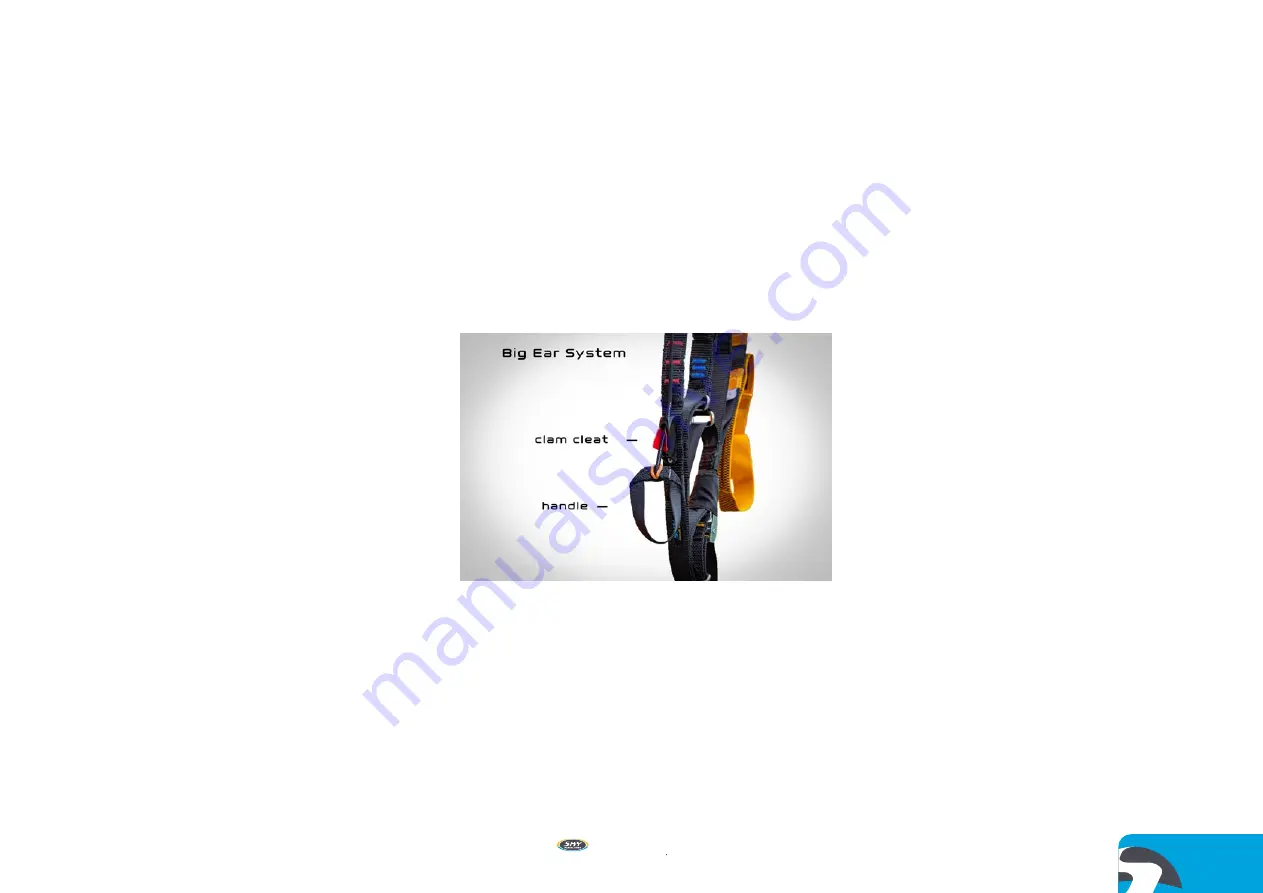
User manual / Handbuch / Navod k obsluze
METIS 4
Depending on the wind conditions or the slope, an adequate
use of brakes can help you to take-off more quickly.
Towing
The METIS 4 may be tow-launched. It is the pilot’s responsibility
to use suitable harness, attachments and release mechanism.
Tow pilot should be qualified to tow.
When towing pilot must be certain that the paraglider is
completely over your head before you start. In each case the
maximum tow force needs to correspond to the body weight of
the pilot and passanger.
4.3. Landing
Because of the exceptional glide, high caution is recommended
in the stages of approach and landing. METIS 4 is an agile
glider, any action on the brakes may cause significant reactions.
It is therefore recommended to execute the first flights in
a familiar environment and under easy conditions. With negative
steering there is more time for the maneuvers to be performed
steadily, which results in reducing the pendulum movements of
the paraglider.
Reminder: Negative steering involves applying the brakes
symmetrically by about 30% of the maximum range to slow the
paraglider and a simultaneous turning by means of releasing the
outside brake. Speeding up just prior to landing allows a more
effective flare and therefore a gentler landing.
4.4. Turning
METIS 4 is designed to turn efficiently and will core thermals
without the need for weight-shift piloting. Negative steering
(see above) slows the paraglider in level flight and can reduce
excessive roll during turn reversals. Your glider is not only
designed to turn rapidly (with approx. 30% brake) but also to
fly slowly in order to help identify areas of lift. It will also effect
a flatter turn (with 15% brake) to minimize sink rate during
the turn. Symmetrical brake-input at 20-30 % enables you
to control the glider – to brake further if the canopy pitches
forward and to release when if the canopy pitches backwards.
4.5. Rapid Descent Techniques
In order to descend, the paraglider must be moved away from
the areas of lift. In case any difficulties occur, the following
techniques can be used to increase the sink rate.
Big Ears
BIG EARS SYSTEM (BES) is comfortable to reach and to use,
it enables the pilot to pull down & lock or unlock & release the
ears with great ease.
To perform the big ears pull the BES handle to the front and
all the way down, then pull the handles back to lock the lines
in the cam cleat. To reopen the ears, push the handles to the
front to release the lines from the cam cleat and let the lines
slide up, keeping the handles to the front to avoid that the lines
will get pinched in the clam cleat on their way up. When BES
is applied, the pilot keeps full steering control and can use the
trimmers with no restrictions. In case you use the brakes to
ease or speed up the reopening, we recommend to apply one
brake and open one side of the canopy and only then apply the
second brake to reopen the second ear. Applying both brakes
at the same time while the glider is flying with a higher angle of
attack might induce a stall.
Spiral Dive
METIS 4 is a maneuverable wing that responds to any input
easily. To initiate the spiral apply one brake progressively to
about 35% and hold it in its position. The speed of rotation
will increase progressively as well as the pressure on the brake
and the centrifugal force that is experienced. The angle or the
speed of rotation can be decreased or increased by releasing
or pulling the brake by several centimeters. Once mastered, the
spiral allows you to descend by more than 10 m/s. Movements
which are extremely abrupt or badly synchronized, or a very
quick initiation of the spiral can result in an asymmetrical
collapse or a spin.
CAUTION:
A deep spiral is a demanding manoeuvre. The
kinetic energy obtained must be reduced by slowly releasing
the inside brake and using at least one whole 360 degrees turn
to bleed off this energy.
B-line Stall
B-stall (manoeuvre 4.4.19) has not been achieved within the
certification process and should therefore not be performed
by the pilots.
4.6. Performance & Use of Brakes
METIS 4‘s best glide is at trim speed (no brakes) – about 37
km/h. The minimum sink rate is achieved by applying approx.
15% of the brakes.When using more than 30% of the brakes
the aerodynamics and the performance of the glider are likely
to deteriorate and the effort to manoeuvre will increase quickly.
In case of extremely high brake pressure there is a great risk of
an impending stall, which occurs at a full brake travel (100% of
the brakes). In normal flying conditions the optimal position for
the brakes, in terms of performance and safety is within the first
30% of the braking range.
9








































